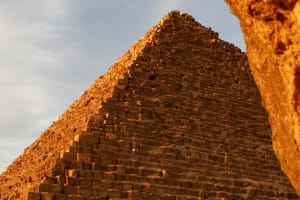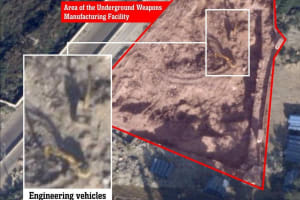The struggle of Mizrahi Jews across the Middle East

When Zebulon Simantov stepped foot outside Afghanistan in 2021, fleeing Taliban pressures with the help of American-Israeli businessman and philanthropist, Moti Kahana, the known Jewish population of Afghanistan reached zero. Simantov has spent the last 3 years in Istanbul but has recently arrived in Israel, his new home. Simantov’s title as the last Jew in Afghanistan solemnly recalls the dying Jewish communities in the Middle East and North Africa due to political oppression and antisemitism, but his arrival in Israel reminds people what Israel continues to mean for these struggling communities; a return to their indigenous roots.
The Jewish Diaspora is the scattering of Jews from their homeland; the kingdoms of Israel and Judea. Those who settled in the regions of North Africa and the Middle East are known as Mizrahi Jews and have developed their distinct yet unified identities by assimilating into new local cultures. Like other Jews worldwide, they have maintained strong emotional connections to their homeland for thousands of years, preserving the hopes of return through their traditions, prayers, and ceremonial rites. However, the Diaspora was only the beginning of their hardships as numerous historic events, such as the rise of Islamic rule and the spread of Nazi antisemitism, threatened their existence.
The rise of Islamic governments, especially in regions such as Yemen and Algeria, left Jews to be considered ‘dhimmis,’ or second-class citizens according to Islamic law. Dhimmis had to pay higher taxes in return for the law’s protection and were required to dress differently than Muslims to be visually identified.
Some areas under the Islamic Caliphate such as Morocco devolved into Jews being killed or forced to convert to Islam. For hundreds of years, Mizrahi Jews lived in this state. But still, these communities had struggles on the horizon.
Nazi antisemitism extended to these Mizrahi communities when Jews in nations like Libya or modern-day Tunisia were killed in the Holocaust. Iraq, Algeria, and Afghanistan were also heavily influenced by Nazi propaganda. A local Baghdad paper published Mein Kampf in 1934, stoking antisemitism in Iraq, which had developed a program similar to the Hitler Youth.
Persecution peaked on June 1, 1941, with the Farhud pogrom. Baghdad Jews, believing Nazi influence to have passed, celebrated the harvest festival of Shavuot. Riots broke out against the Jews, who were targeted to be killed over the next two days. Between 150-180 Jews were murdered, 600 more were injured, and an undetermined number of women were raped. This event shocked Iraqi Jews and prompted an exodus, in which 124,000 out of 135,000 emigrated by 1951. Antisemitism erupted further when the State of Israel was established in 1948 and Zionism became a capital crime in Iraq. Many of these nations deported Jews at this time on account of their identity.
These periods of history have prevented Mizrahi Jews from establishing new homes for themselves. Most have had to flee once more to other countries, such as the United States, Canada, the UK, countries in Central and South America, and Israel. Afghanistan held 40,000-80,000 Jews between the 11th-12th century CE, including many, who, despite their political disadvantages, held prestigious positions in society. Yet Simantov’s evacuation is evidence of how they were choked out. Syria likewise has no more Jews remaining from their original 55,000. Most Iranian Jews now live in Israel and the US with those remaining enduring fear and constant governmental monitoring. Since 1948, the Iraqi Jewish population has now fallen to 4. Algeria saw a reduction of 140,000 to 200 in the same period.
Israel means that these communities, alongside other Jews worldwide, could be reconnected with their homeland without the constant threat of persecution. Even if not residing within the country, Jews feel a sense of unity and hope with its existence. Communities scattered by the Diaspora have an opportunity to return. The creation of the state can be described as the most ambitious enterprise to restore a community to its home. Israel’s evacuation operations mean that many Mizrahi Jews have finally found sanctuary.
Mizrahi Jews are far from finding lasting peace. Many endure ongoing persecution in their respective regions and those in Israel are experiencing war from those who have threatened the death of Jews and the destruction of their nation. The story of Mizrahi Jews is also being suppressed in the West from record-high antisemitism. This is largely due to Jews being accused of being colonizers by those ignorant of their ancestral ties to Israeli soil. Universities across the West have become focal points of these falsities, as seen in protests like Columbia’s ‘Gaza Solidarity Encampment’ or the University of Manchester’s Students’ Union, which demanded all protestors be free from liability and for their school to cut all ties with Israel universities.
These events have silenced the suffering of the Jewish community and are guilty of distorting information to fit their narratives. Though Israel offers safety to many persecuted communities, the struggle is far from over as the world waits for geopolitical progress toward religious tolerance and peace.
Amidst these hardships, Mizrahi Jews have developed a colorful diversity within their culture, from spoken languages to traditions. Yemenite Jews, for example, resemble Sunni Muslims in fashion and culture due to Yemen’s isolation. They learned to develop intricate daggers and rings for muslims though they would be killed for owning them themselves. Afghani Jews thrived in the cotton and silk industries, dying their hands blue in the production process which originated a stereotype for Jews. These different customs, especially as Mizrahi Jews have once again had to move and find community elsewhere, testify to their lived suffering and show admirable resilience in holding on to their identity.
In the face of rising antisemitism, it is important to remember the Mizrahi Jews and their stories. Throughout November, CAMERA on Campus launched the latest iteration of its Mizrahi Stories campaign, which highlights the stories of Jewish diaspora communities across the Middle East and North Africa.
“One of my relatives,” Karmel Melamed, an Iranian Jew, says in a video on the Mizrahi Stories website, “was abruptly arrested by the regime on false charges of spying for Israel and America. They had no evidence. They had no witnesses…he was put in front of a firing squad and he was executed. He became the third Jew the Iranian Jew officially executed.”
These stories should motivate diligence in ending the Mizrahi Jews’ religious persecution and emphasize the necessity of Israel as hope for safety and the way to return these diverse communities, after enduring hardship for hundreds of years, to their original home. Their struggle is not yet over, but perhaps they can soon have the solidarity of many more who recognize their legitimacy to Israel.

James Shell is an American writer and student at Queen's University Belfast and a fellow with CAMERA UK [Committee for Accuracy in Middle Eastern Reporting and Analysis]. He has taken an interest in Israel and the projection thereof on the world stage having studied politics, visiting the country, and gaining experience in journalism.














